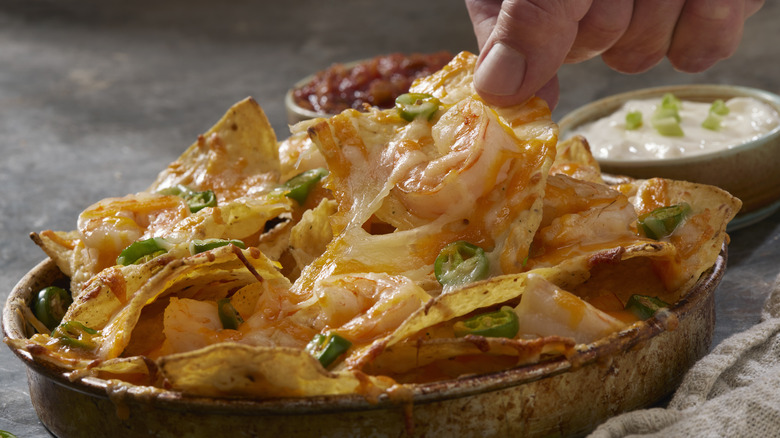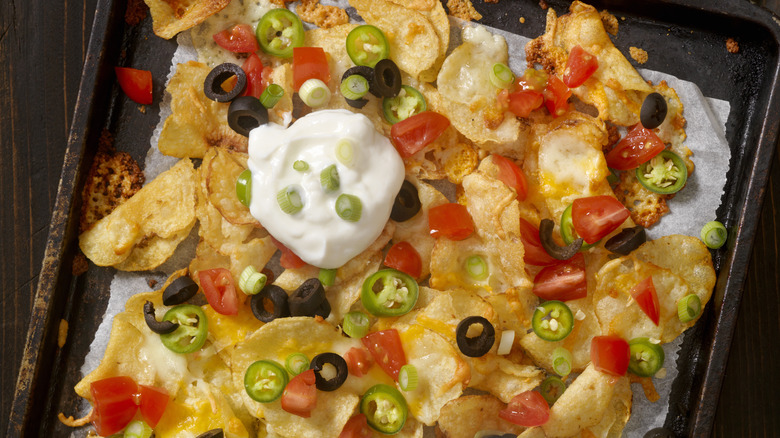Expert Tips For Avoiding The Biggest Pitfall With Homemade Nachos
Crispy tortilla chips coated in a generous layer of melted cheese with seasoned beef, sliced jalapeños, and guacamole make for a great platter of homemade nachos. Unfortunately, nachos often turn out with unevenly-distributed toppings, soggy, limp chips, and lukewarm, partially-melted cheese. To guarantee perfect nachos at home every time, Mashed spoke with Rick Martinez, a professional chef and author of the autobiographical cookbook, "Mi Cocina: Recipes and Rapture from My Kitchen in Mexico." Martinez offered us some sage advice about prepping and serving the ideal nacho platter.
Martinez explained that the number one mistake when making nachos is "making them too far in advance; no one wants soggy cold nachos." When the cheese and toppings sit on the chips for too long, they become gummy — hardly what you want for nachos. To avoid this, Martinez says it's all about the preparation you put in long before you assemble the nachos or even turn on the oven. "Have all your toppings prepped and ready: cooked meat and veggies and salsas, shredded cheese, guac, sour cream, chopped onion, cilantro, tomato, and whatever else you like," Martinez advises. "Keep them separate in plastic containers or zip-top bags in the fridge." This technique is known as mise en place, a key component of professional chefs' routines.
Stack it up
Now, with all of your toppings prepped, Martinez says to wait until about an hour before you're ready to serve to actually assemble and bake. Start by heating warm elements like pre-cooked meat, because they will take too long to come to temperature as the sheet pan nachos bake. "Layer your chips and all the hot toppings, then top with cheese and put under the broiler until the cheese is melted and the chips around the perimeter of the pan are getting toasty," says Martinez. Note that cold veggies, salsa, sour cream, and guacamole should not be added to the nachos at this point. Focus instead on getting nice, even layers of cheese and meat on the chips.
Martinez stresses that the nachos should be served immediately after their time under the broiler, saying, "I like them hot out of the oven. Obviously, they will cool as they sit, if they last that long." Once the nachos are out of the oven and the cheese is perfectly melted, it's time to add all of those well-chilled toppings on top and around the sides. Martinez says this is key to good nachos, adding, "You should at least give your friends and family the chance to eat a crispy nacho with both cold and hot toppings — a flavor, texture, and temperature explosion in your mouth."

